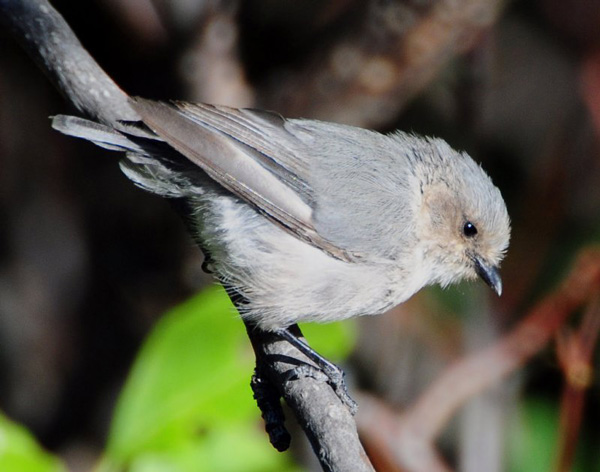|
Utah Bird Profile |
|||||
|
Name Roots: (Gr. pslatria, "a harpist"; L. parus, "a titmouse" - L. minimus, "least") |
|||||
| In Utah: |
 by Paul Higgins |
||||
| Nesting, feeding, characteristic behaviors: |
Nests in a deciduous tree or in a shrub at a height of 4-25 (To 50) feet, in a pendant nest. This species is a rare cowbird host. During the breeding season, this species is an <B>insectivore: lower-canopy gleaner</B>. During the non-breeding seasons this species is an omnivore: lower-canopy forager. | ||||
| Habitat: | It doesn’t seem to prefer one
type of vegetative habitat over another (although I have never found it in
plant communities higher in elevation than pinion-juniper forests)
~Merrill Webb Breeds in Utah in pinyon-juniper and mountain riparian habitats. |
||||
| How to find: |
This is a very active bird that forages in small flocks.
Because of its behavior I have never really been very successful in targeting a
specific area in hopes of finding this species. I have found it at the mouth of
Rock Canyon east of Provo and in Broad Canyon southwest of Fairfield in Utah
County; in Washington County along the Virgin River from Rockville downstream to
St. George, Lytle Ranch in Beaver Dam Wash and on Utah Hill west of St. George.
Other birders have found it in the foothills north of Orem in Utah County. It
doesn’t seem to prefer one type of vegetative habitat over another (although I
have never found it in plant communities higher in elevation than pinion-juniper
forests)--just wherever it can find small insects on which to feed. ~Merrill
Webb |
||||
|
|
USGS Profile (Geological Survey)
|
US
Winter Range Map |
US
Summer Range Map | |
|||||
|
|||||
|
Abbreviations | References | Legend
|
|||||